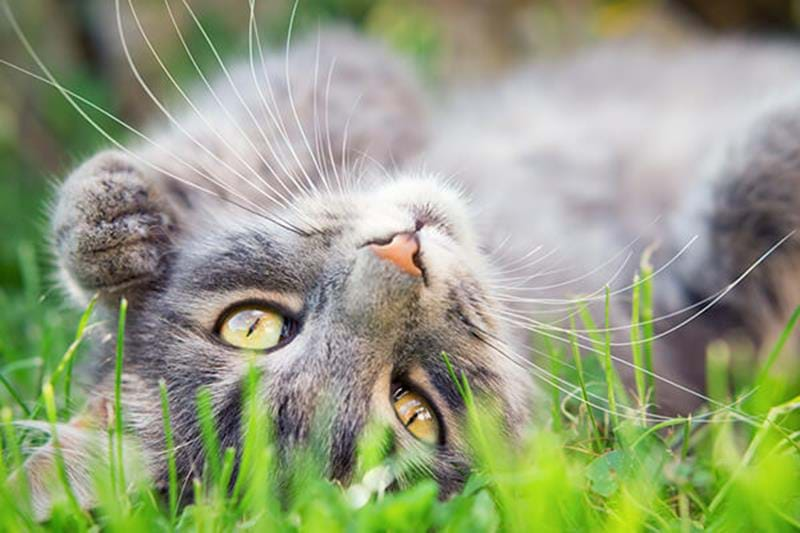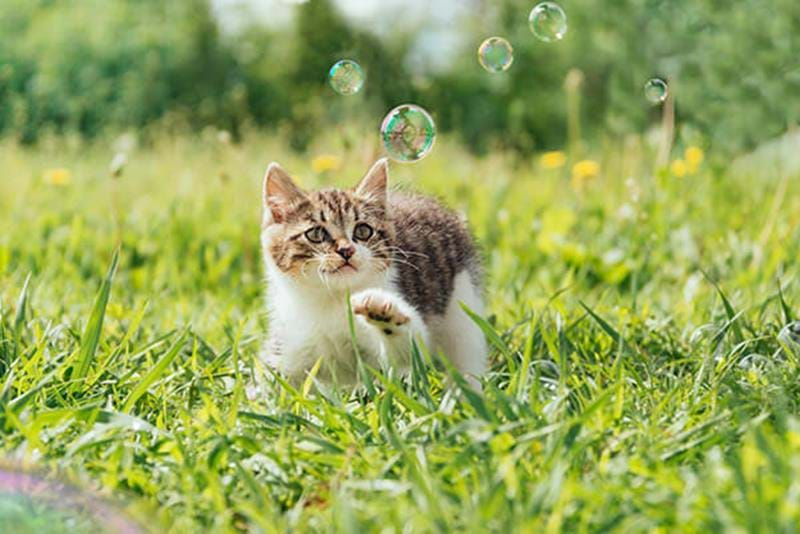There are different breeds and types of cats, but their bodies all work in much the same way. They are built like other predators with fast reflexes and flexible bodies to easily escape dangerous animals or catch their prey while hunting.
To understand your cat’s behaviour and how their body works, it’s good to find out facts about the cat’s anatomy (how it is built) and physiology (how it works).
CATS SEE WELL IN THE DARK
The design of the cat’s eye allows cats to see well in the dark, an important part of the cat’s anatomy. Cats have a field of view of 285 degrees and about half of the fields of view from both eyes overlap. They are known for having good eyesight and good night vision. Researchers have concluded that the eyes of nocturnal mammals are different from those of other animals, which means that they see six times better than humans in the dark. They have millions of small lenses in the eye that capture the light so only a small amount of light is required for them to be able to see. In total darkness, however, they don’t use their eyes but but instead their sensory hairs and sense of hearing and smell. Cats’ eyes also have a light-reflecting surface behind the retina and that’s why their eyes can be perceived as shining when you shine a torch at them in the dark.
CAT ANATOMY – SKELETON AND MUSCLES
Cats’ skeleton and muscles are ready for hunting. The cat’s body consists of cartilage and the skeleton which contains up to 282 bones and acts as a mineral depot for phosphorus and calcium. The cat’s anatomy and physiology makes them successful hunters. The cat has well-developed muscles, especially in the jaw, legs and back, which help them hunt. Cats also have a very mobile spine, which makes them flexible. The tail is an extension of the spine and helps maintain balance. Mobility makes it easier for them to creep forward when they to catch their prey, and makes it easier when they have to get over and under or between obstacles. It is also thanks to strong muscles in the back and hind legs that cats can easily climb straight up, for example up trees, with their claws as an aid. The claws, on the other hand, are not designed to be used for climbing straight down, which is why cats often get stuck in trees.
SKIN AND FUR PROTECTS AND WARMS
Skin and fur is designed to protect the cat. The glands in the skin also secrete a substance called pheromones which is used to mark territories. That’s why you may notice that cats rub up against furniture in your home. Cats’ fur is very dense and when the hair reaches its full length, it doesn’t grow anymore. The coat consists of three different types of hair, whether your cat is short-haired or long-haired, all of which have different functions.
- Guard hair is the top layer with straight and even hairs. It gives the cat its colour and protects it from getting wet.
- The awn hair is underneath and adds an extra layer of protection. The awn hair is made up middle hair, middle wool and wool hair
- The undercoat is closest to the body and is made up of thin and soft hair. This keeps the cat warm.
CAT ANATOMY – STOMACH AND INTESTINES
The stomach and intestines need to function properly so your cat can absorb the nutrients in the food. Cat’s saliva does not contain digestive enzymes like human saliva so cats don’t chew food for as long as we do. Cats’ digestion begins in the stomach. In the gastrointestinal tract, the food is broken down so that the nutrients can be absorbed properly. The enzymes are adapted to digest proteins and fats and carbohydrates are not as easy to digest. That’s why cats shouldn’t eat too many carbohydrates. The pH of the stomach is very acidic, which facilitates the cleansing process and provides a natural protection against infections in the digestive tract.







